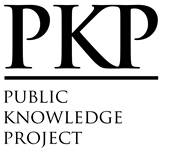Fish consumption rate, fish processing method and stunting prevelance in Kuta Blang Village, Samadua Sub-District, South Aceh
Abstract
Stunting is the nutritional status based on the index of PB/U or TB/U where in anthropometric standards of research on the nutritional status of children, the measurement results are in the Threshold of (z-scrore) <-2 SD to -3 SD (short/stunted). Indonesian has a fairly high prevelance of Stunting. One of the causes is inadequate nutrition during the growth period. Rating fish can provide protein and micronutrient nutrition to supportchildern's growth and development. The purpose of this study was to determine the relationship between fish consumption Rates, processing methods and Stunting prevalence. This research is a type of case control study. With research subjects 117 families (78 non-stunted families and 39 stunted families). The research was conducted in the village of Kuta Blang, Samadua district, South Aceh district in September-October. Statistical analysisi using Chi-square test. From this study, it was found that there was no relationship between the number of fish consumption (p=309) and theprvalence of Stunting and there was a significant relationship between how to process (cook) fish and the prevelance of Stunting (p=0,002).
Keywords: fish consumption; how to process; stunting
Keywords: fish consumption; how to process; stuntingFull Text:
PDFReferences
Daroedono, E. (2019). Konsumsi ikan dan potensi anisakiasis: aspek komunikasi kesehatan masyarakat suatu program pemerintah. Jurna Ilmu Kedokteran. 13(1).
Djunaidah, S. I. (2017). Tingkat Konsumsi Ikan di Indonesia: Ironi di Negeri Bahari. Jurnal Penyuluhan Perikanan dan Kelautan, 11(1). 12-24.
Fikawati, S dan Apriluana Galdy. (2018). Analisis Faktor-Faktor Risiko Terhadap Kejadian Stunting pada Balita (0-59) di Negara Berkembang dan Asia Tenggara. Media Litbangkes 28(4).
Kementrian Kelautan dan Perikanan. (2020). Kelautan dan perikanan dalam angka. Jakarta: Kementrian Kelautan Perikanan.
Kementrian Kesehatan, R. (2018). Buku Saku Pemantauan Status Gizi Tahun 2017. Jakarta; Gerakan Masyarakat Hidup Sehat.
Lamid A, Almasyhuri dan Sundari D. (2015). Pengaruh Proses Pemasakan Terhadap Komposisi Zat Gizi Bahan Pangan Sumber Protein.
Media Litbangkes 25(4).235-242. Millennium Challenge Account- Indonesia. Backgrounder: stunting dan masa depan Indnesia [Internet]; 2015. [Cited 2022, March 05]; http//mca-indonesia.go.id/wpcontent/uploads/2015/01/Backgrounder-StuntingID.pdf.
Peraturan Gubernur Aceh Nomor 14 2019. Pedoman Pencegahan dan Penanganan Stunting. Banda Aceh: Dinas Kesehatan Aceh.
Pratiwi R, et al (2017). Hubungan Konsumsi Ikan terhadap kejadian stunting pada anak usia 2-5 tahun. Jurnal Kedokteran Diponegoro,6(1),36-45.
Rahmadhita, K. (2020). Permasalahan Stunting dan Pencegahannya. Jurnal Ilmiah Kesehatan Sandi Husada 11(1), 225-229.
Ririanty, M, Rohmawati, N dan Aridiyah. (2015). Faktor yang Mempengaruhi Stunting pada Balita Perdesaan dan Perkotaan. Jurnal Pustaka Kesehatan. 3 (1).
Sevilla, Consuelo G (2007) Research Methods.Rex Printing Company. Quezon City.
Sutriyati P, Badraningsih dan PrihastutiE. (2004). Teknik Pengolahan Ikan Laut. Inotek. 8(2).
Vijayan DK, Jayarni R, Singh DK, Chatterjee NS, Mathew S, Mohanty BP, Sankar TV, Anandan R. (2016). Comparative studies on nutrient profiling of two deep sea fish (Neopinnula orientalis) and (Chlorophthalamus corniger) and brackish water fish (Scatophagus argus). The Journal of Basic and Applied Zoology. 77: 41-48.
DOI: https://doi.org/10.29103/aa.v9i2.6580
 Article Metrics
Article Metrics
 Abstract Views : 185 times
Abstract Views : 185 times
Refbacks
- There are currently no refbacks.
Copyright (c) Acta Aquatica: Aquatic Sciences Journal

This work is licensed under a Creative Commons Attribution 4.0 International License.









